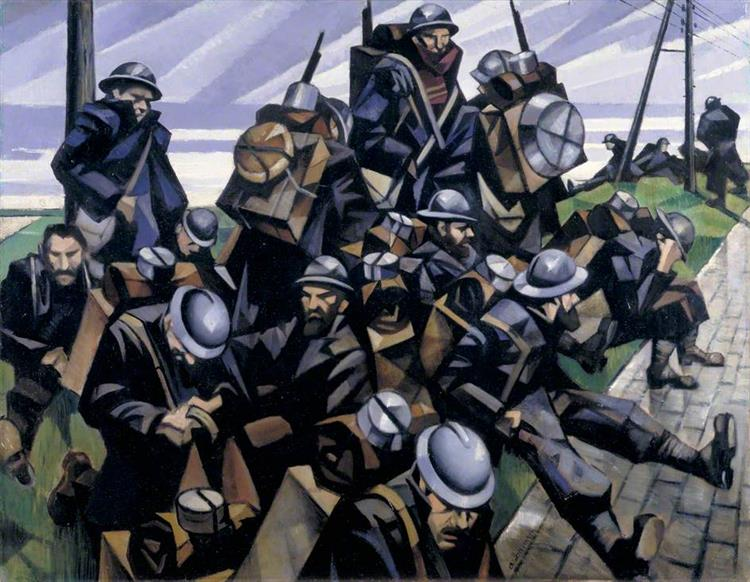Early Modern art- WW1
This is Dead Germans in a Trench. It was made by William Orpen in 1918. The location where it was painted is still being determined, but the painting was from England, so there is a possibility this might be made there. This was made during WWI. The painting shows two dead German soldiers, one lying on its back and the other on its stomach.
The Germans have their faces painted to look like they are decomposing or starting the process, suggesting they have been there for a while. This era was heavily impacted by the war; it was one of the starting blocks for the other harmful things of its time. WWI had a bigger impact because it led to the Great Depression.
The painting was first displayed in London in May 1918 after the initial decision of the military Censor Arthur Lee. The painting has a nice contrast of colors. Along with the background line work, the painting does a good job of shading and highlighting the dead bodies well and also blending them into the painting to showcase they have been there for quite some time. I wouldn't own this painting. I think it looks unappalling but still interesting in its own way.
The painting is most known for its stylized depiction of the war. The painting has figures thought out that are angular or mechanical. The people lack features that set them apart from real people or fake people. They were painted as such to show that the soldiers were like machines. There is linework throughout this piece. It's leaning more toward abstract art. The painting also shows smoke rising up above the battery position, suggesting that shells are in mid-air.
Personally, I find this painting very interesting, and I love the linework in the painting that makes the ground look two-dimensional and almost like water. The painting is something that I would hang up in my home. I find the small details to be interesting, like a puzzle in a way. The longer you look the more you see in it.





I like all of these, but the Dead Germans one is my favorite. What could be more WWI than dead people in a trench? I like the colors, lighting, and perspective of it. The way the bodies almost blend into the ground is interesting symbolism, even if it is merely contrived.
ReplyDeleteThe second one is cool too, I like the strange forms and angles that make up the piece. I can't tell if those are meant to be chimneys or exhaust pipes, but I think they serve well enough either way. Machine-like soldiers are an interesting way to look at it, they even try to do it intentionally with soldiers marching in uniform lines. It makes me wonder at the connection between mechanization and the dehumanization of war deaths.
I am a fan of shape-heavy works, so the last one is good in my books too. I like the absence of little details. Most of it is implied in the shadows. It is an uncommon depiction, I think, to paint soldiers at rest instead of fighting and dying. It adds some humanity to what is so often reduced to numbers. This is a curious mirror to the previous piece.
I really like the geometric shapes of "A Battery Shelled". I think the art style gives a very dystopian Dr. Seuss feel to the painting. I can definitely see the symbolism of the soldiers being machine like. I also agree with your statement of the piece feeling like a puzzle, it looks like something you could take apart and piece back together.
ReplyDelete